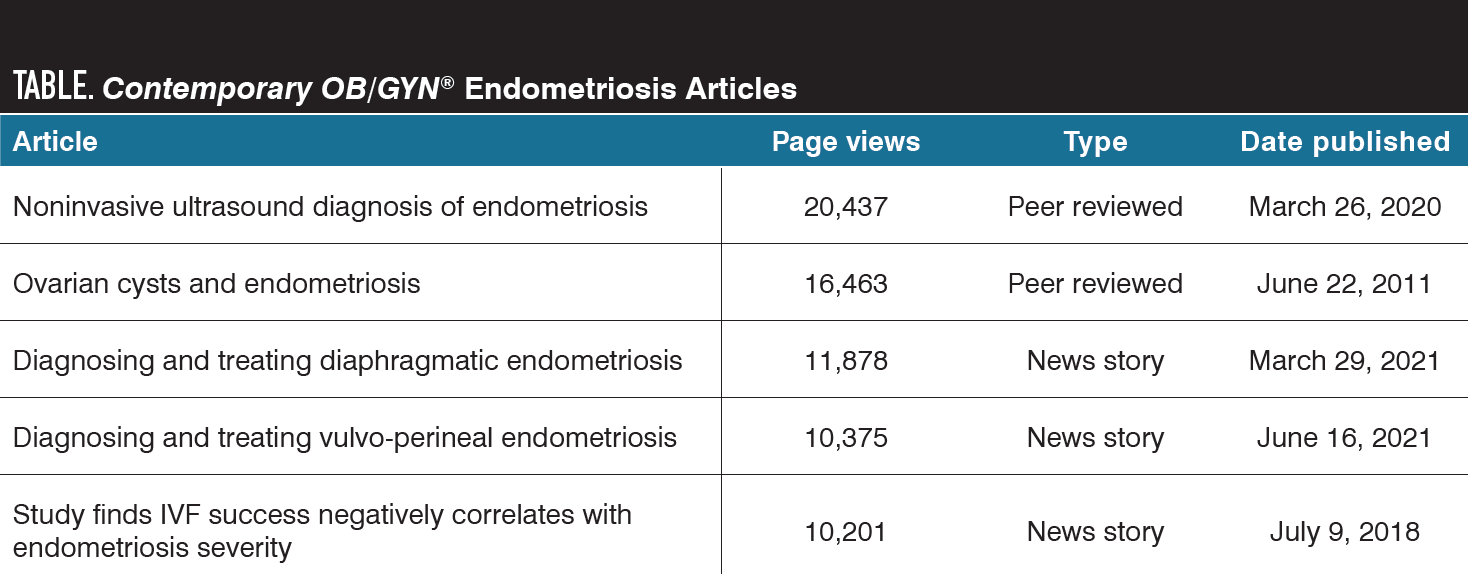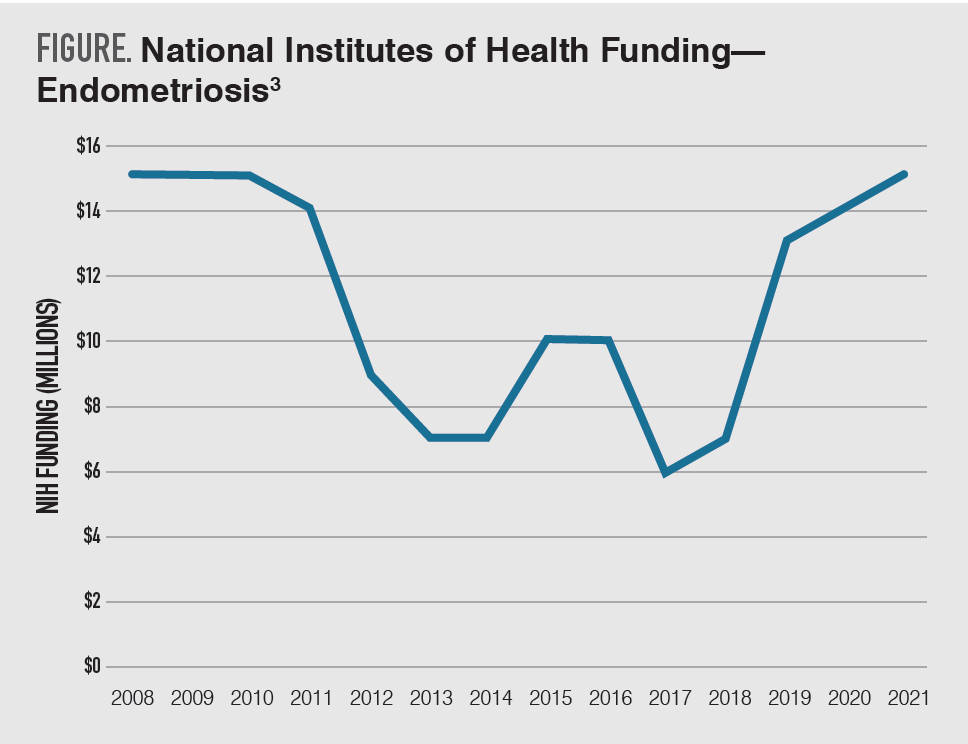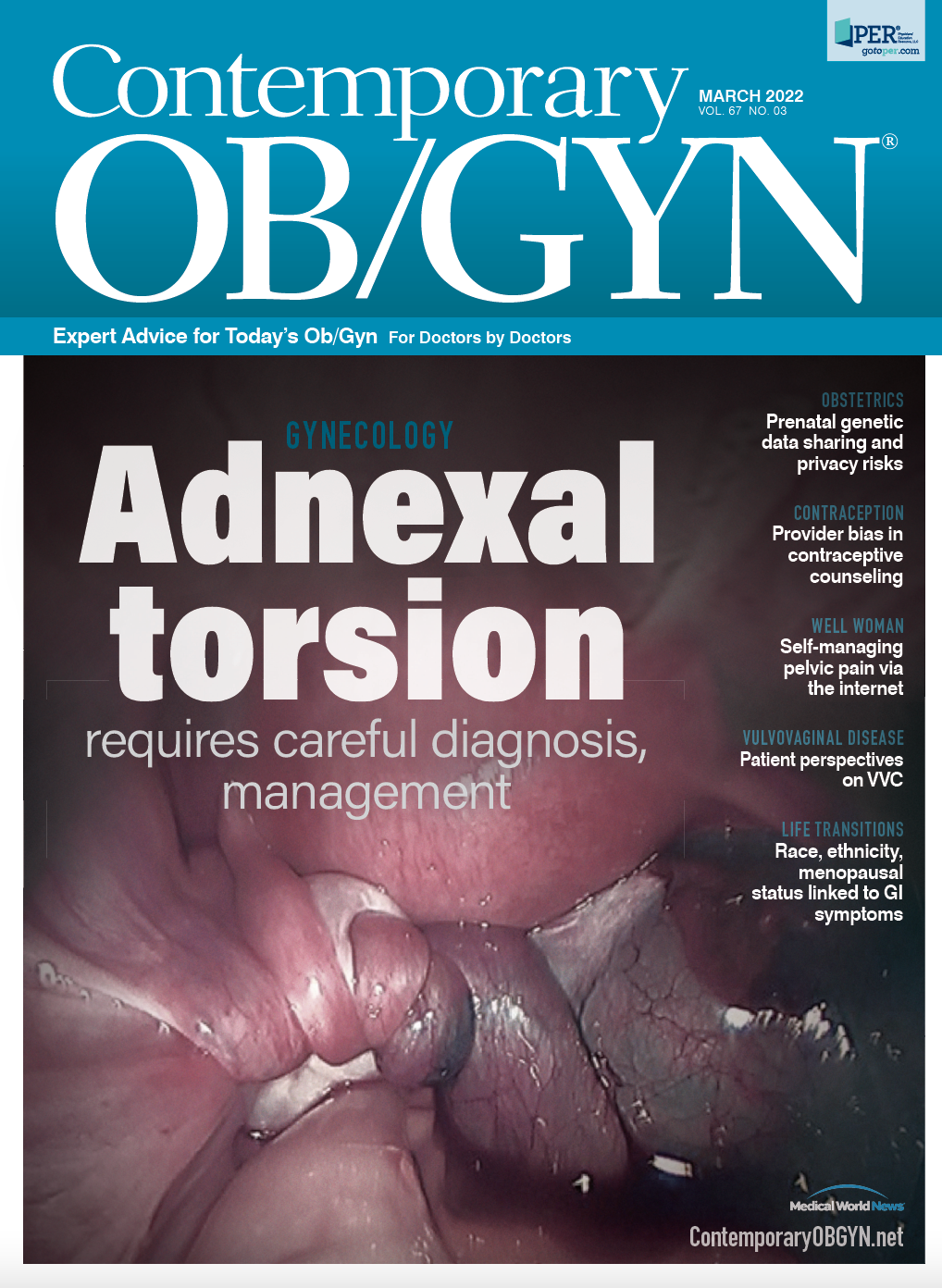Bringing awareness to endometriosis
National awareness months and days span a variety of topics, from celebrated foods (think National Ice Cream Day, National Bagel Day, National Pizza Day) to businesses (free Slurpee at 7-Eleven) to our terrain: health issues. March alone is a national health awareness month for over 10 conditions, one of which is endometriosis.
Endometriosis is a topic that is relevant to both our patients and providers, judging by the number of page views on our website (Table). Endometriosis is estimated to affect over 6 million women in the United States.1 Symptoms include pain, bleeding between menses, gastrointestinal problems (such as diarrhea, constipation, bloating, and nausea), and infertility. Although the most common symptom is pain, more than one-third of women with grade IV endometriosis present without pain, suggesting the need to keep endometriosis in the differential, even if pain free.2
TABLE. Contemporary OB/GYN Endometriosis Articles

National awareness months are useful not only to bring awareness to a particular disease or disorder but also to raise interest, provide knowledge, and offer a better understanding of the condition. With this month being National Endometriosis Awareness Month, Contemporary OB/GYN® is featuring an article on how patients use social media to learn more about the condition.
FIGURE. National Institutes of Health Funding—Endometriosis3

Research on endometriosis includes understanding the etiology or cause; the role of genetics, hormones, and the immune system; and management options. Interestingly, funding for endometriosis from the National Institutes of Health has fluctuated from $6 million to $15 million since 2008 (Figure).3 Compared with other diseases with similar 2020 and estimated 2021 funding, endometriosis affects a much greater proportion of the population than the funding might suggest.
Endometriosis is diagnosed when endometrial tissue—which typically is inside and lines the uterus—is present outside the uterus, most commonly in the ovaries, fallopian tubes, and the tissue lining the pelvis. Although history and physical exam may be helpful with the diagnosis, definitive diagnosis often requires laparoscopy. Given the common symptoms, on average it takes more than 7 for a woman to get the diagnosis.
Scholarly peer-reviewed articles about endometriosis in PubMed have risen almost every year and now top 2000 per year. Despite this, more studies need to be done. For an illness that affects 1 in 10 women, this month, let’s up the ante on support, research, and commitment to an issue that significantly and adversely affects women’s health—and that of their families.
References
- Fuldeore MJ, Soliman AM. Prevalence and symptomatic burden of diagnosed endometriosis in the United States: national estimates from a cross-sectional survey of 59,411 women. Gynecol Obstet Invest. 2017;82(5):453-461. doi:10.1159/000452660
- Gordon HG, Mooney SS, Conroy IC, Grover SR. When pain is not the whole story: presenting symptoms of women with endometriosis. Aust N Z J Obstet Gynaecol. 2022;10.1111/ajo.13482. doi:10.1111/ajo.13482
- National Institutes of Health. Estimates of funding for various research, condition, and disease categories. (RCDC). June 25, 2021. Accessed February 8, 2022. https://report.nih.gov/funding/categorical-spending#/

Addressing mental health risks in endometriosis patients
December 10th 2024A new study underscores the critical need for gynecologists and mental health professionals to collaborate in managing anxiety, depression, and sexual dysfunction in women with endometriosis, driven by chronic pain and related comorbidities.
Read More
Study finds high rates of incidental MRI findings in endometriosis cases
October 29th 2024A recent study highlights the frequent occurrence of incidental findings on pelvic magnetic resonance imaging for endometriosis, emphasizing the need for radiologists to focus on those with higher clinical significance.
Read More
